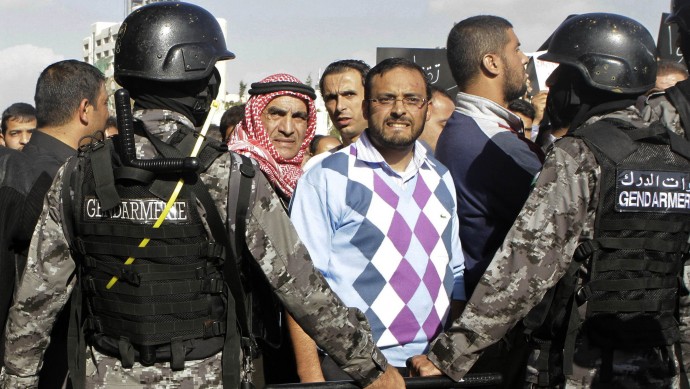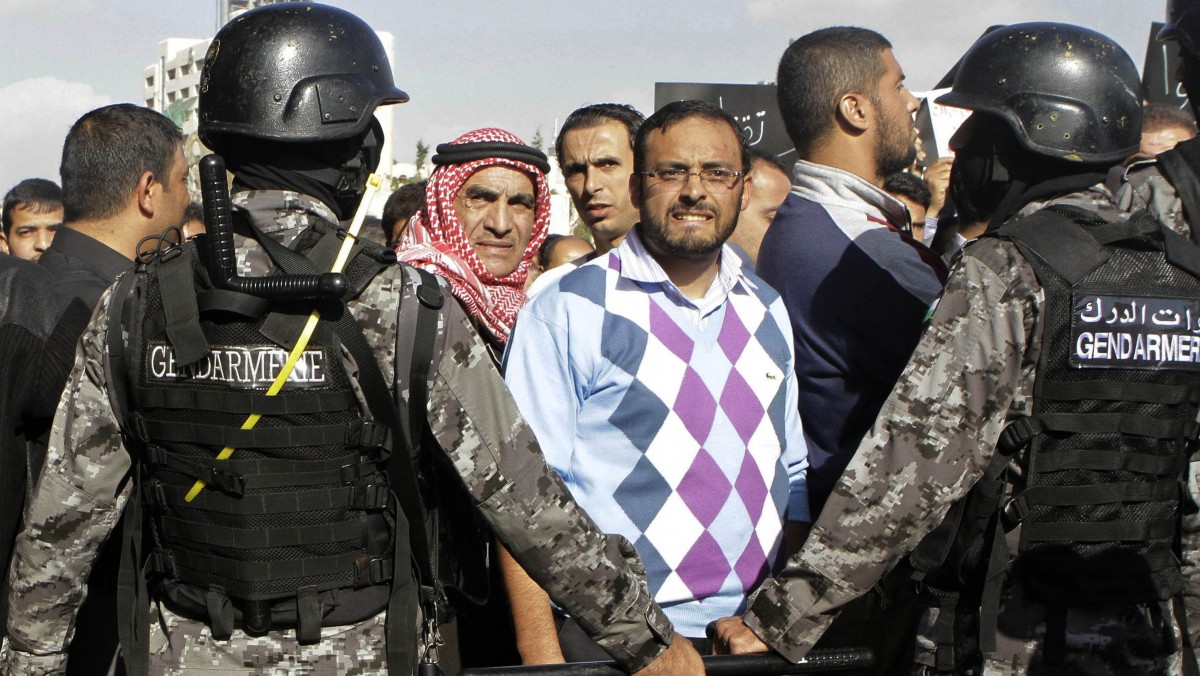
As revolutionary tumult continues to fire imaginations and projectiles across the greater Middle East, one set of states continue to chug along seemingly unmolested by the chaos and conflict around them. I am referring, of course, to the region’s monarchies. With a few exceptions, the revolutions convulsing the region have largely spared them – taking down instead the region’s nationalist republics, e.g., Tunisia, Egypt, Libya and, soon, Syria.
While this is no doubt comforting to royal families across the region, it begs the question as to why this is the case. Why has the current batch of monarchies survived while their nationalist peers have fallen like dominoes? Is it simply due to differing socio-demographic variables? Or, is there something intrinsic about the Middle East’s monarchies that make them more stable and resistant to political change?
In answer to the latter question, recall that the Middle East’s monarchies were once rather fragile. In the years after World War II, monarchs raised to their thrones by colonial powers were toppled one after the other. Egypt’s King Farouk was tossed out by Gamal Abdel Nasser in 1952, while in 1958 King Faisal II of Iraq was overthrown by the Iraqi Army. The King of Yemen, in turn, was ousted by military officers inspired by Nasserite Egypt in 1962. Libya, not to be outdone, threw out King Idris in 1969. Four years later, the Afghans threw out their monarch, while, in 1979, the Shah of Iran was deposed. Of course, it should be remembered that the granddaddy of all Middle Eastern monarchies – the Ottoman Empire – was placed on history’s rubbish heap by Kemal Atatürk after the end of the World War I.
The Arab monarchies that today we take for granted as being unchangeable features of the region’s political landscape also aren’t entirely immune to political unrest.
Jordan, for instance, saw its first king, Abdullah I, assassinated in 1946, and a brief, bloody civil war was fought there between Palestinian nationalists and supporters of the Jordanian monarchy between 1970 and 1971. Jordan has also faced some pressure from today’s demonstrations, as have the monarchies of Morocco, Kuwait and Oman.
Bahrain, in turn, experienced mass anti-government protests which were violently put down by the Bahraini government and Saudi military intervention. Finally, even Saudi Arabia itself has experienced some protests, and it is important to recall that the Saudi monarchy has faced significant, though intermittent, opposition from Islamist radicals since the late 1970s. Indeed, radicals there seized and held for two weeks the Grand Mosque of Mecca in 1979.
So, monarchy itself is clearly not immune to the type of contentious politics currently afoot in the Middle East, but Morocco, Jordan, Oman and the Gulf Kingdoms other than Bahrain have nonetheless remained relatively resilient in the face of immense domestic and international challenges.
Factors at play
One factor which may be at work is the relative homogeneity of these states’ populations. Bahrain, the one Gulf monarchy to have had serious protests resulting in large-scale violence, is a Sunni monarchy that dominates a Shiite majority population. The rest are majority Sunni Muslim, and though there are some ethnic and religious differences in the other monarchical states, these minorities have either been bought off and/or cowed into submission (Saudi Arabia), incorporated relatively deeply into society (Morocco) or have been previously suppressed and pose no medium-term danger (Jordan). Thus, relative ethnic and sectarian peace is an important part of their current stability.
Another factor at work, at least in Gulf, is the immense wealth that oil income has brought. In Saudi Arabia, for instance, the merest hint of protests led to a massive increase in the Kingdom’s social welfare budget. Similarly, Qatar and the UAE – both of which have very small populations – are immensely wealthy. The average Qatari, for instance, makes about $75,000 per year while citizen needs are taken care of in an all-encompassing welfare state. Likewise, the United Arab Emirates has a rich, oil-fueled economy whose small population has benefited from high wages, a luxurious welfare state and rapid economic development. It is interesting to note that the monarchies that have experienced some major protests are either poor – Jordan, Morocco and Oman – or, as in the case of Saudi Arabia, have a large population that dilutes the effectiveness of regime largess.
All in the family
Third, an additional reason these regimes have survived is the unique way these monarchies penetrate both the state and society. In the Gulf in particular, the ruling family in each are deeply embedded in both. Family members are slotted into high-ranking positions throughout the security apparatus, armed forces, foreign service, education ministry, finance ministry and so on. Thus the state in each, despite having the outward appearance of modernity, is really little more sophisticated in its staffing practices than, say, medieval Europe or La Cosa Nostra.
Likewise, most major private business – if such could be said to really exist in these places – similarly operate as a branch of the family business, with family members in all their many varieties – cousins, second cousins and so on – taking positions throughout the commanding heights of the Gulf economy.
The system in these states is in effect not too dissimilar from the one that prevailed in Europe during the heyday of feudalism when the first son would inherit the land and title while the remaining sons would become high-ranking members of the clergy or military officers. Only in this case, the consolation prize is not a Bishopric or flag rank, but a position as minister of the interior, finance, foreign affairs, the central bank or a position on a corporate board.
This makes the elites of these states exceedingly close knit in their familial relations and mimics the way Communist Party cadres fill top positions in today’s China. Like in China, the ruling family runs nearly every major institution of societal importance while citizens’ most important relationship is not with the state or each other, but with various members of the ruling family and their close associates. Since blood is thicker than water and the members of the ruling family generally understand that they either rule collectively or hang separately, the system works after a fashion – so long as the populace being so ruled is small enough and the regime ruling rich enough to pull it off.
Finally, the one area of society where the ruling families have generally not been able to penetrate deeply is, not surprisingly, the Islamic clergy. As a result of this inability to subvert the religious establishment for their own ends, the remaining Gulf monarchies co-opt them by handing over education, family law and the legal regulation of societal norms to the religious authorities. The deal is straightforward – in exchange for granting these monarchies and their ruling families the moral legitimacy to govern, the ruling families give a significant amount of power, patronage, influence, and wealth to the clergy. Indeed, maintaining the balance between the two can be a tricky proposition, and woe to the ruler who thinks he can disregard the will of the Imams and the Ayatollahs – as the Shah of Iran found out in 1979. Thus, it is no surprise that the remaining Arab monarchies are exceedingly conservative, indeed outright reactionary, on most social issues.
The Middle East’s remaining monarchies are therefore political creatures finely adapted to a particular environment. Too little wealth or too big a population or too much change or too little and the ruling monarchs can find themselves on the next flight into exile, or worse. So far, these regimes have survived a particularly brutal wind of late that has knocked over what were perceived to be equally strong states and rulers. While they are likely to weather the current storm, it remains to be seen whether they will be able to ride out the next one if the winds of change continue to blow unabated through the region.


